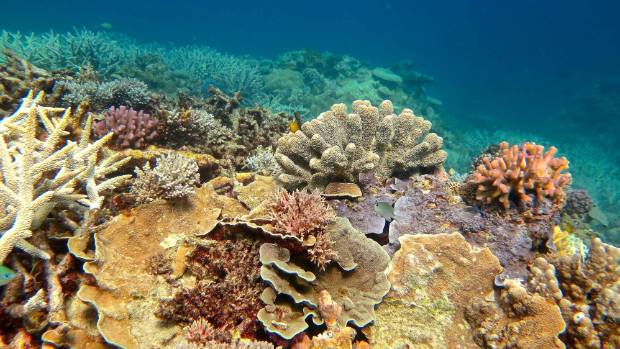
The Great Barrier Reef is unlikely to recover from the marine heatwaves that wiped out much of its coral in 2016, according to a new study.
The scientists examined the impact of the 2016 marine heatwave that alone caused the death of about one-third of the Great Barrier Reef corals, mostly centred on the northern third section.
They studied how much abnormal heat triggers bleaching, the additional heat that killed the corals, and the accumulation needed to cause “an ecological collapse in the transformation of species”, said Terry Hughes, Director of the ARC Centre of Excellence for Coral Reef Studies at James Cook University, and the lead of author of the paper published Thursday in Nature.
The thresholds “are lower than we thought they would be”, Hughes said.
A key guide is the number of so-called degree-heating weeks (DHW), such as waters a degree above average for a certain period. If reefs had DHWs of six or more – as about 29 per cent of the reefs suffered – the loss of corals reached 60-90 per cent, Professor Hughes said.
Some species, such as staghorns and tabular corals, were particularly susceptible, while dome-shaped porites corals were relatively resilient.
“The 2016 marine heatwave has triggered the initial phase of that transition [to heat-tolerant reef assemblages] on the northern, most pristine region of the Great Barrier Reef, changing it forever as the intensity of global warming continues to escalate,” the paper said.
The fact the northern section – with fewer people, little fishing and almost no water quality issues – was hit so hard was notable.
“There’s almost nowhere to hide from extreme temperatures,” Hughes said. “Even the best-managed, most remote place is vulnerable.”
The Nature paper is one of a series being prepared or already published by Hughes and colleagues at Queensland’s James Cook University that examine the unprecedented back-to-back mass bleaching of the Great Barrier Reef in the summers of 2016 and 2017.
Upcoming papers will examine the impacts of the latter event – which mainly hammered the middle section of the Reef – and the scope for recovery.
Just as coral species responded differently to the heat stress, so too have fish species that depend on them.
Butterfly fish, for instance, feed on only a couple of coral species. “If their diet disappears, so do they,” Hughes said. Parrot fish, though, eat mostly seaweed, and will fare better.
Still, most fish depend on branching corals as a nursery – the type of corals that suffered high mortality in the heatwave.
“People have long predicted there will be significant fisheries impact from losing juvenile habitat and we expect that to unfold over the next five years,” Hughes said.
Most of what researchers know about reef recovery has come from the study of the aftermath of cyclones.
Such events, though, tend to carve a swathe through the reef, perhaps 50 to 100 kilometres wide, with patchier damage than mass bleaching. Coral larvae come into the void from either side, typically taking a decade for branching corals to recover.
“The scale of the damage from back-to-back bleaching is vastly bigger,” Hughes said. “We don’t know yet where the larvae are going to come from, and in what numbers.”













